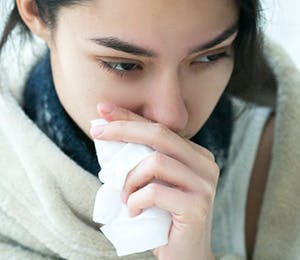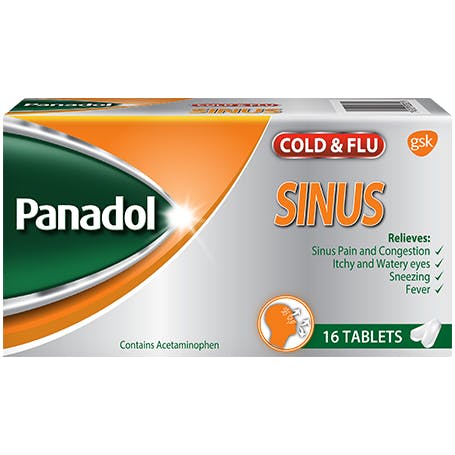
What's the difference between a cold and flu?
Sore throat, runny nose, stuffy nose, sneezing and headache. Are those signs of a common cold or flu? It’s hard to tell, since the symptoms of both illnesses can overlap.
Here are some tips to help you tell the difference between cold and flu symptoms, and what to do if you are hit with one of these infections.
HOW THE SYMPTOMS DIFFER?
While a cold and the flu share many of the same symptoms, there are some important differences that you need to know about.
I HAVE A COLD
Colds are generally milder than the flu. Colds are also more likely to cause a runny or stuffy nose, and generally do not result in serious health problems.1
I HAVE FLU
Flu typically affects the whole body including your lungs.5,6 Symptoms of fever, fatigue and muscle aches are more common, and these symptoms are usually more severe with flu than cold.1

HOW SYMPTOMS DEVELOP?
COLD: Gradually
FLU: Rapid or sudden onset

FEVER?
COLD: Rare
FLU: Usual

TIRED, FATIGUE, WEAKNESS?
COLD: Sometimes
FLU: Usual

CHILLS?
COLD: Uncommon
FLU: Fairly common

BODY OR MUSCULAR ACHES?
COLD: Slight
FLU: Usual

HEADACHE?
COLD: Rare
FLU: Common

RUNNY NOSE?
COLD: Common
FLU: Less common

COUGH?
COLD: Mild to moderate
FLU: Common

CHEST DISCOMFORT?
COLD: Mild to moderate
FLU: Common

NASAL CONGESTION OR STUFFY NOSE?
COLD: Common
FLU: Sometimes

SNEEZING?
COLD: Common
FLU: Sometimes
Both cold and flu symptoms are mostly a result of the immune system working to fight off infection. Home remedies can help to alleviate symptoms while the body fights off the infection and can also be complemented with over-the-counter cold and flu medicines to reduce the intensity and severity of symptoms. Your pharmacist or doctor can help advise on the most appropriate treatments for you.
PANADOL´S HELPING HAND
Over-the-counter cold and flu medicines such as Panadol Cold & Flu can ease flu symptoms and help you get back on your feet. Cold symptom relief can help you rest easier and in turn, aid in your recovery.
According to the flu symptoms that you are experiencing you can select the best Panadol Cold & Flu product for you:
*For more detailed information, please refer to the product labelling. In case of doubt, please seek medical advice. Your pharmacist or doctor can help advise on the most appropriate treatments for you. If your symptoms persist or worsen, you should consult your doctor.
Take Panadol Cold & Flu products only as directed and always refer to label before use.
Do not take with any other products that contain the same active ingredient(s). Taking products containing any of the same active ingredients together may lead to an overdose. Immediate medical advice should be sought in the event of an overdose, even if you feel well.
WHEN TO SEE A DOCTOR
Although the cold and flu may be common conditions, they both can require medical attention. Here are some, but not all the indications that you should see the doctor:2-4

1. You have difficulty breathing, feel short of breath, or are experiencing pain in the chest or abdomen.

2. You have a fever that does not go away, refuses to come down despite medication, or you have a fever with a rash.

3. Your symptoms (which may include fever, headache, nasal congestion, cough or fatigue) persist or get worse.

4. You have severe or persistent vomiting.

5. You experience sudden dizziness or confusion.
REFERENCES
1. Centers for Disease Control and Prevention (2019, December 30). Cold Versus Flu. Available at: https://www.cdc.gov/flu/symptoms/coldflu.htm
2. Centers for Disease Control and Prevention (2020, February 6). Common Cold. Available at: https://www.cdc.gov/antibiotic-use/community/for-patients/common-illnesses/colds.html
3. Centers for Disease Control and Prevention (2019, February 11). Common Colds: Protect Yourself and Others. Available at: https://www.cdc.gov/features/rhinoviruses/index.html
4. Centers for Disease Control and Prevention (2019, October 8). The Flu: What to do if you get sick. Available at: https://www.cdc.gov/flu/treatment/takingcare.htm







